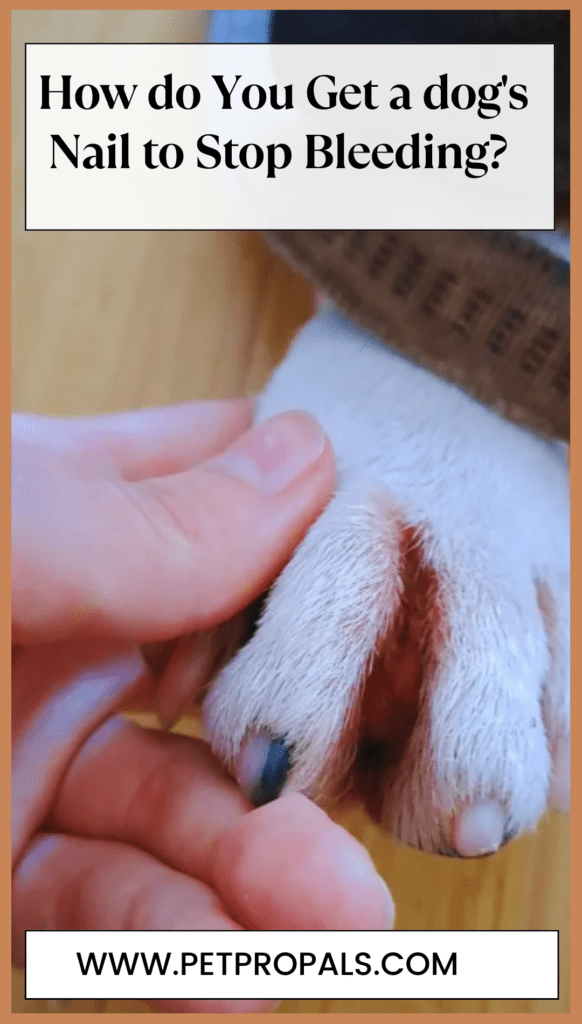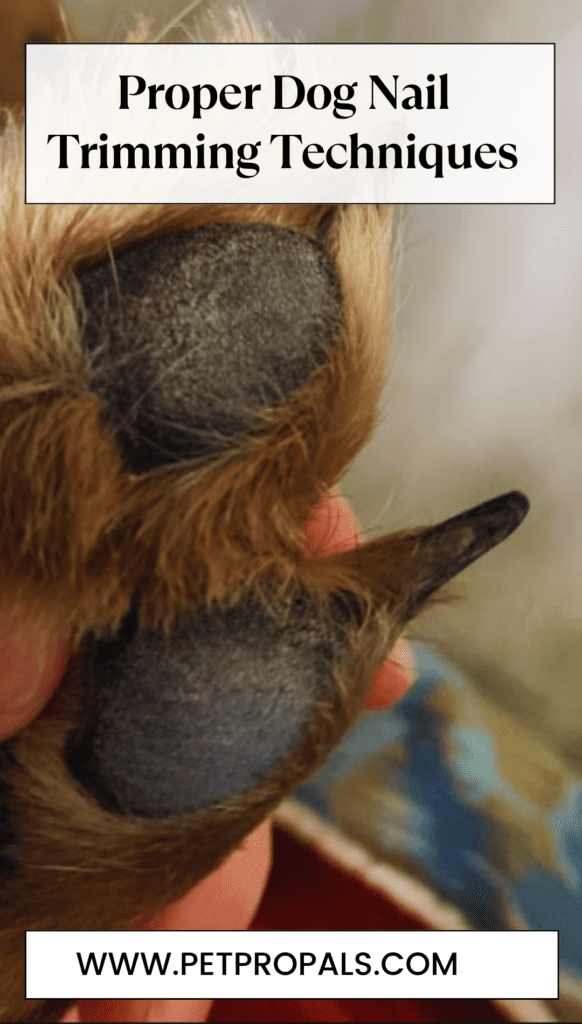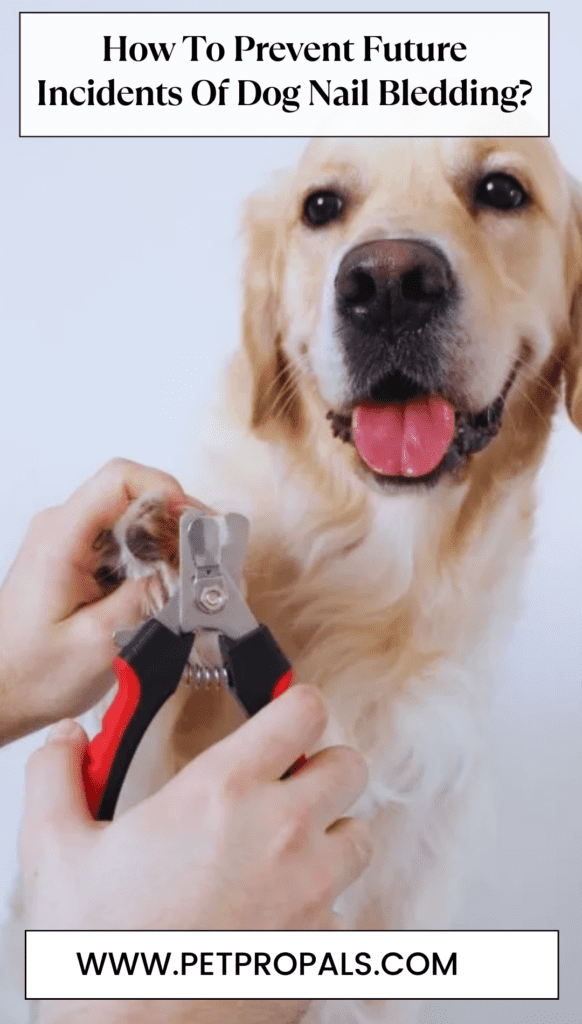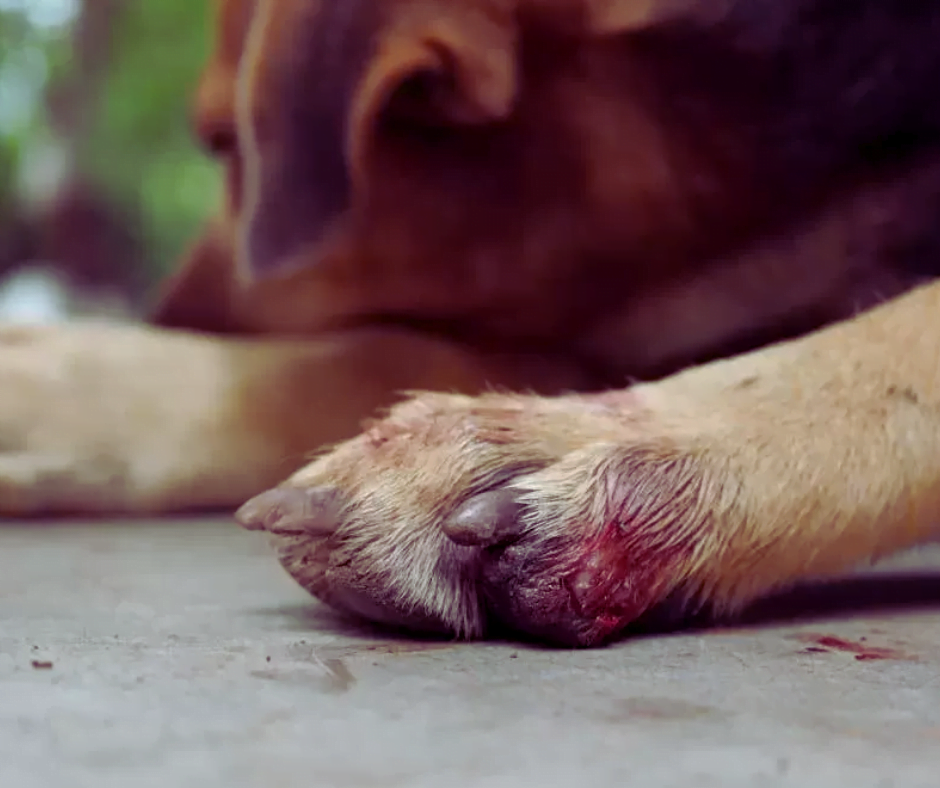Have you accidentally clipped your dog’s quick? Don’t stress! We’ve all been there. That sudden yelp and the sight of red can be terrifying.
But fear not; help is at hand. This guide will walk you through the steps to quickly stop the bleeding and soothe your pup’s discomfort.
No more endless searches for solutions. We’ve covered you with simple yet effective methods to tackle that pesky nail bleed. You can do this! Let’s get started!
How to Stop a Dog’s Nail Bleeding (Taking Action)

When you notice your dog’s nail bleeding, it’s essential to act immediately. Applying direct pressure to the affected nail can help control the bleeding.
Importance of Immediate Action
Acting quickly can minimize blood loss and reduce your dog’s discomfort.
Use a clean cloth or gauze pad to gently but firmly press on the bleeding nail to stop the bleeding.
Hold the pressure steady for 2-3 minutes. This will help the blood clot and stop the bleeding.
Use Styptic Powder
Styptic powder is a go-to solution for stopping nail bleeding in dogs. It’s easy to use and highly effective.
Using Styptic Powder: To stop the bleeding, put a small amount of styptic powder on a cotton swab and gently press the swab onto the bleeding nail.
You don’t need to press hard because the powder works quickly. For the best results, make sure to cover the whole bleeding area.
Emergency Substitutes: If you don’t have styptic powder, use household items like cornstarch or baking soda paste.
Mix with a bit of water to form a thick paste and apply it to the nail in the same way you would use styptic powder.
These substitutes can help clot the blood and stop the bleeding in a pinch.
Remember these steps to help your dog’s nail injury. These tips will help you handle the situation calmly and efficiently, ensuring your dog’s comfort and well-being.

Some Additional Tips
Certainly! Here are some extra recommendations to help guarantee that your dog is comfortable and secure:
Keeping Your Dog Calm
To Keeping Your Dog Calm, Follow these steps:
- Create a Relaxing Environment
- Use Calming Products
- Maintain a Routine
Create a Relaxing Environment: Provide a quiet, comfortable space away from loud noises and other pets. Soft bedding, calming music, and familiar toys can help soothe your dog.
Use Calming Products: Consider using natural calming aids such as pheromone diffusers, calming collars, or herbal supplements designed to reduce anxiety in dogs.
Maintain a Routine: Keeping a consistent daily routine can help reduce stress. Regular feeding, walking, and sleeping times provide a sense of normalcy and security.
Using an Elizabethan Collar (Cone)
A cone, also known as an Elizabethan collar, helps prevent your dog from reaching wounds, surgical sites, or irritations on its body. This is crucial to promoting proper healing and preventing infections.
Make sure the collar fits well. It should be snug but tight enough for your dog to eat and drink comfortably.
If the traditional plastic cone is too uncomfortable for your dog, consider soft or inflatable alternatives that might be more pleasant.
How To Prevent Future Incidents?

To prevent future incidents, ensure your dog receives regular check-ups from the vet, proper training, a safe environment, balanced nutrition, and mental stimulation.
Take these detailed tips to keep your dog well-cared for and protected.
Follow Proper Nail Trimming Techniques
Using sharp clippers and proper techniques is essential when clipping your dog’s nails. Dull clippers can crush the nail, causing pain and injury.
Using proper techniques when grooming your dog will result in a clean cut. This reduces the risk of splitting and infection.
If you’re new to owning a dog, you should ask a vet or professional groomer for the correct methods. This will help you avoid mistakes.
Maintain Regular Nail Trims
Remember to trim your nails regularly to keep them healthy. Keeping your nails at the right length helps prevent them from breaking or splitting, which can be painful.
Regular trimming also enables you to avoid problems with walking and posture.
See a veterinarian if your dog shows pain, infection, or abnormal behavior after nail trimming.
Professional advice provides proper care and stops difficulties. Follow these detailed tips for your dog’s nail health.
Make sure to promptly seek veterinary attention if you notice any of the following after trimming your pet’s nails:
- Persistent Bleeding: If bleeding continues for more than 10 minutes despite efforts to stop it, it may indicate a more profound injury or inability to clot correctly.
- Signs of Infection: Watch for symptoms like pus around the nail, redness, swelling, or warmth. These signs suggest bacterial infection, which can worsen if not treated promptly.
- Severe Damage: If the nail is broken, split, or severely damaged, it can cause intense pain and expose sensitive tissues. This requires professional assessment to prevent further injury and ensure proper healing.
Conclusion
Preparing to handle your dog’s nail bleeding is crucial for every pet owner.
Accidents can happen during nail trimming, but you can effectively manage bleeding at home by acting promptly and using tools like styptic powder or household alternatives.
If your pet’s nail continues to bleed for more than a few minutes or if you notice any signs of infection, such as pus, redness, or swelling around the nail, it’s essential to seek help from a vet.
Severe nail damage, like breaks or splits, requires a professional evaluation to ensure proper healing and prevent further complications.
Following these steps, you can confidently care for your dog’s nail health and ensure their comfort and well-being.

